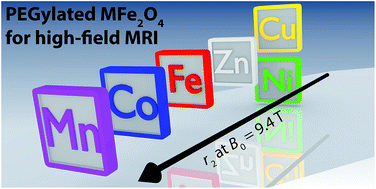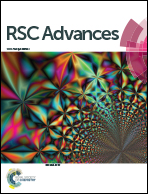Synthesis, characterization, and evaluation of PEGylated first-row transition metal ferrite nanoparticles as T2 contrast agents for high-field MRI†
Abstract
Poly(ethylene glycol) (PEG)-coated transition metal ferrite (MFe2O4; M = Co, Cu, Fe, Mn, Ni, Zn) nanoparticles (NPs) were generated by a one-pot synthetic protocol and found to be small, fairly monodisperse, and superparamagnetic in nature. When evaluated for high-field magnetic resonance imaging, these showed high values of r2 and r2/r1 at 9.4 T. The well-documented biocompatibility of PEG coatings makes these NPs attractive candidates as T2 contrast agents for high-field MRI. A systematic comparison of magnetic and relaxivity measurements reveals MnFe2O4 and CoFe2O4 NPs to be superior T2 MRI contrast agents compared to Fe3O4 NPs.



 Please wait while we load your content...
Please wait while we load your content...